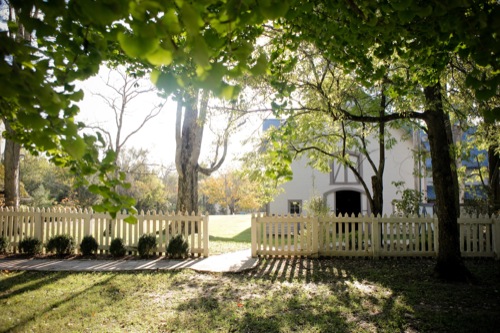
Courtesy Belle Meade
One of the enduring images of the antebellum South is the stately plantation mansion. Although many of those large houses were destroyed during the Civil War, many others survived and were lovingly protected and preserved by succeeding generations of owners, and some have been restored as private or state-owned house museums.
Here’s a look at four mansions open for tours that provide a window into the 19th-century Southern lifestyles of the wealthy.
Belle Meade
Nashville, Tennessee
“When people think of a Southern plantation, they often think tobacco or cotton,” said Mark James, group sales manager for Belle Meade, the 19th-century mansion located on the outskirts of Nashville. “But it was very different here. What they mainly did with the property was raise and groom championship thoroughbred race horses.”
As horse racing was the top American sport in the mid-1800s, Belle Meade was a center of entertainment and hospitality. “That’s the same tradition [in which] we host people today,” said James. “You are not greeted by velvet ropes and glass walls. You walk among the collection much as you would have in the 1800s. We call it an open collection; it is one of the things we pride ourselves on.”
Two floors of the sprawling mansion, which was added on to several times after John Harding built the original brick house in 1820, are open for guided tours by costumed interpreters.
The house is furnished with original items from the Harding and Jackson families, who owned the plantation, or with authentic period pieces. “There are no reproductions,” said James.
Among the eight outbuildings is a late-19th-century carriage house with a large collection of carriages.
Group options include lunch in the carriage house or the on-site restaurant, and tastings in Belle Meade’s two-year-old winery, which makes muscadine and blackberry wines.
“Our latest addition is culinary tours, only for groups,” said James. “They go into the original plantation kitchen, which was recently restored, and see a cooking demonstration or take part.”
Groups not only learn about or help prepare 19th-century food, they also get to sample the finished products, such as sweet potato biscuits and pecan honey jelly.
Stately Oaks
Jonesboro, Georgia
One of the most iconic images of a Southern plantation is the white-columned Tara from the movie “Gone With the Wind.” Although Stately Oaks in Jonesboro was not the prototype for Tara, it does have strong connections with the movie.
“We in no way say it was a model for Tara. That would be false, and we don’t want to mislead,” said Rebekah Cline, director of marketing and communications for the Clayton County Convention and Visitors Bureau. “But when it was being filmed, Hollywood producers did come to the Atlanta area and took photos of several homes. Stately Oaks was included, so it does have that connection.”
Stately Oaks is an 1839 Greek Revival mansion that was moved from its original site to a historic park in Jonesboro where several other historic structures, including the last one-room schoolhouse used in Clayton County, have been relocated.
“It does have that traditional white-column-mansion-type feel,” said Cline. “And the land it is on is called Margaret Mitchell Memorial Park.”
Mitchell, who wrote the novel on which the movie was based, often visited her great-grandparents in Jonesboro and said she got her literary inspiration for the book from those visits.
“She said Hollywood glamorized her concept, which was more like her grandparents’ home, a small country home,” said Cline.
Costumed docents greet motorcoach groups and give tours of the house, which is furnished with period pieces. Groups can arrange for a meal in the schoolhouse, a vintage dance troupe and period musician, and characters dressed as Rhett Butler and Scarlett O’Hara from the movie.
“In the tour, they tell a lot of stories,” said Beth Bailey, vice president of sales and promotions for the CVB. “Some are local. But others are just great [stories] about that time in the 1830s to 1860s, such as the courting candle. How far up the wick went was how much time a young man had to court.”
Group activities can be arranged through the CVB.









